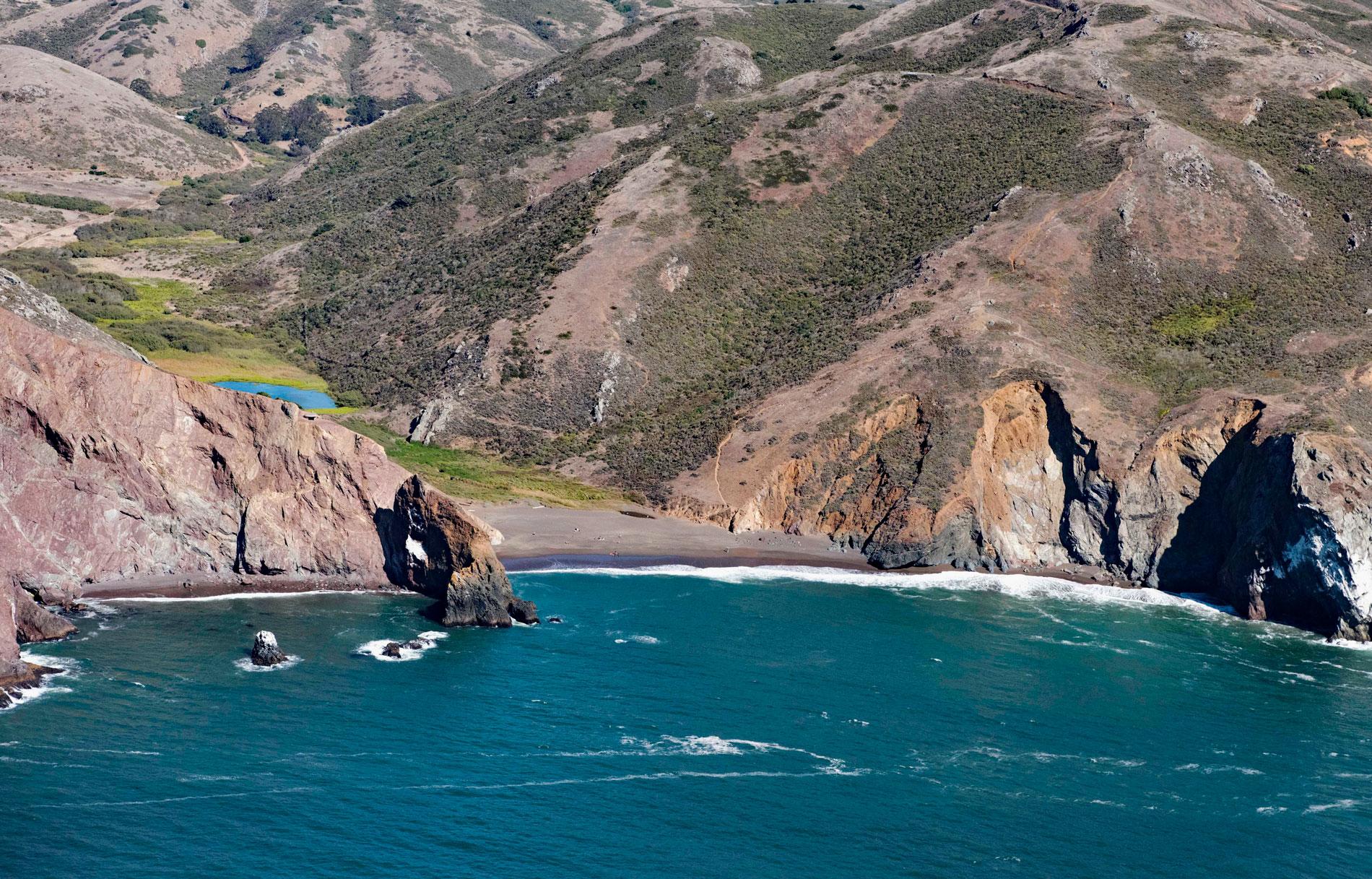Tennessee Cove is an embayment with a sandy beach about 600 feet (180 m) long on the Pacific Ocean between Pirates Cove to the north and Rodeo Cove to the south in Golden Gate National Recreation Area about 10 miles (16 km) northwest of San Francisco and 3.6 miles (5.8 km) southwest of Mill Valley, California. Tennessee Valley Creek starts from an elevation of about 1,000 feet (305 m) on the southern flank of Coyote Ridge and flows generally south and west to Tennessee Cove. The land was originally part of a Mexican land grant called Rancho Sausalito, which was given to William A. Richardson by Governor Juan Alvarado on February 11, 1838. The rancho of 19,571 acres (7,920 ha) encompassed much of the Marin Peninsula and what was then known as Elk Valley for the thousands of Tule elk that provided lard and hides for the local rancheros. The small beach and cove at the end of the valley were apparently not named until the American period when they were referred to as Indian Cove. The cove was renamed after the steamship Tennessee ran aground on the beach in 1853.
Tennessee was a wooden side-wheel steamship built in 1848 for the New York and Savannah Steam Navigation Company by William H. Webb in New York. The ship displaced 1,275 tons, and was 211 feet (64 m) long, with a beam of 36 feet (11 m) and a draft of 22 feet (6.7 m). The company operated steamers carrying passengers, high-value freight, and cotton between Savannah, Georgia, and New York. In 1849, Tennessee was sold and modified to carry more passengers, and sent to the Pacific to join the Pacific Mail Steamship Company‘s line of steamers connecting Panama City and San Francisco. The California Gold Rush attracted tens of thousands of fortune-seekers from around the world. Dozens of ships were involved in transporting them from ports on the eastern U.S. seaboard to the Isthmus of Panama at Chagres on the Atlantic coast, where they then traveled up the Chagres River by canoes and then overland by mules to Panama City on the Pacific coast, and then boarded another steamer for the voyage north to San Francisco. Tennessee made 29 voyages from Panama City to San Francisco carrying passengers, freight, and mail, and returned with gold.
On March 6, 1853, Tennessee was steaming toward the Golden Gate in fog, commanded by Captain Edward Mellus who was not aware of the outgoing tide’s strong current that swept Tennessee north and past the bay entrance towards the Marin Peninsula. The ship’s lookout sighted breakers, and Mellus ordered the engines reversed; however, large rocks blocked the ship and Mellus had no choice but to beach the ship. It was hoped that the vessel could be pulled off but heavy surf on March 8 broke the keel, ruptured the steam pipes, and flooded the hull. The crew managed to salvage the mail, the baggage, and the gold. By March 21, the remains of Tennessee had mostly disintegrated in the surf. Today, remnants of the ship can be seen during extremely low tides at the south end of the beach. Read more here and here. Explore more of Tennessee Cove and Golden Gate National Recreation Area here:

